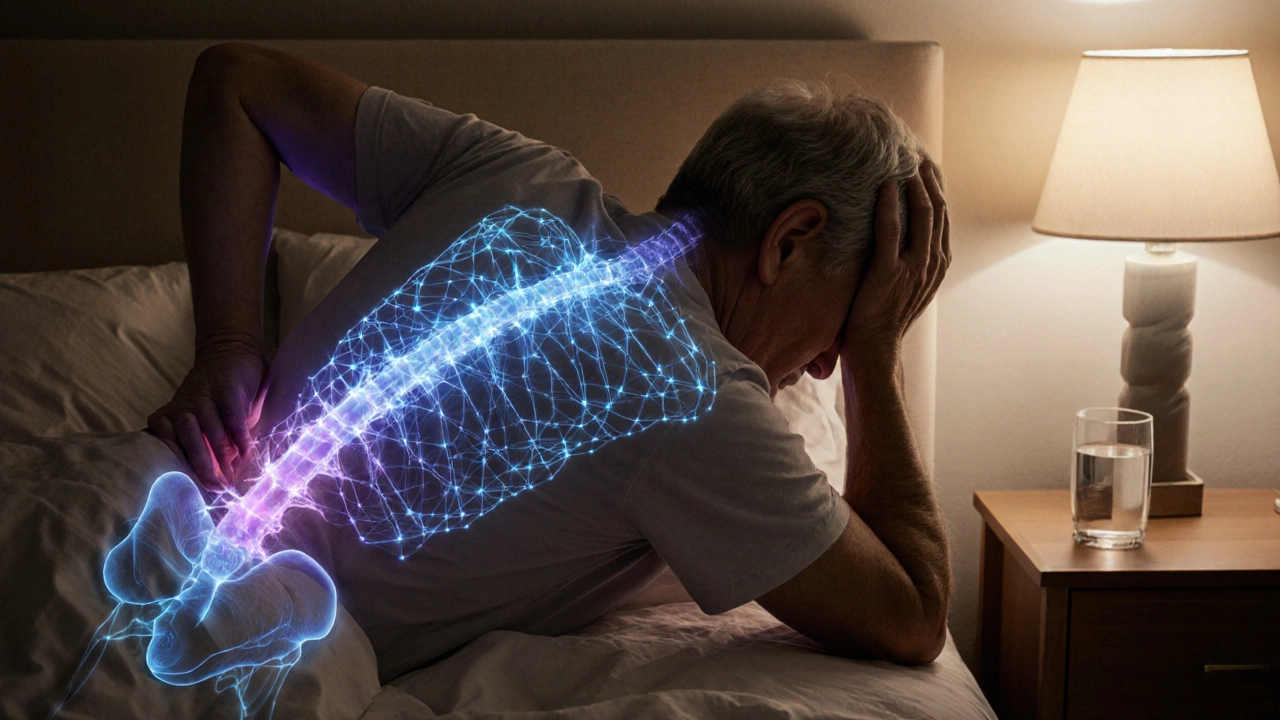Chronic Pain Management: Real‑World Strategies That Work
Living with chronic pain can feel like a nonstop battle, but you don’t have to fight it blind. Below are straight‑forward actions you can start today to lower pain, improve mood, and keep life moving forward.
Know What Triggers Your Pain
First step is figuring out what makes your pain flare. Keep a simple notebook or phone note: record activity, food, stress level, and pain score (0‑10) each day. After a week you’ll spot patterns – maybe long walks, certain foods, or late‑night screen time are culprits. Knowing the triggers lets you tweak habits before the pain spikes.
Medication: Use It Smart, Not Hard
Prescription or over‑the‑counter meds are a useful tool, but they work best when paired with other methods. Talk to your pharmacist about timing – taking pain relievers right before a known trigger event can blunt the surge. If you’re on opioids, ask your doctor about taper plans or alternatives like duloxetine, which targets nerve pain without the high addiction risk.
Don’t forget non‑drug options. Topical creams with menthol or lidocaine give localized relief without systemic side effects. A short trial of a low‑dose NSAID after meals can reduce inflammation for joint‑related pain.
When you start a new medication, write down the dose, time, and any side effects. This log helps you and your doctor decide what stays and what goes.
Physical Activity – Move, Don’t Hide
It’s tempting to stay in bed, but gentle movement is a proven pain‑killer. Start with five minutes of seated marching, then add a slow walk around the house. The goal is to increase blood flow and release endorphins without overdoing it.
Consider low‑impact classes like water aerobics, yoga, or tai‑chi. They improve flexibility, strengthen supporting muscles, and teach breath control – all of which can lower pain perception. If you join a class, let the instructor know you have chronic pain so they can modify poses.
Strength training with resistance bands once a week also helps. Stronger muscles take pressure off joints, which often eases discomfort.
Mind‑Body Techniques
Stress fuels pain, so calming the nervous system is key. Simple practices like 5‑minute deep‑breathing, guided meditations, or progressive muscle relaxation can shrink pain signals. Apps with breathing timers make it easy to fit into a coffee break.
Cognitive‑behavioral therapy (CBT) isn’t just for anxiety; it teaches you to reframe pain thoughts, reducing the emotional weight of discomfort. Many therapists now offer virtual sessions, making it accessible even if you can’t travel.
Nutrition and Hydration
What you eat can affect inflammation. Aim for a diet rich in oily fish, leafy greens, berries, and nuts – all packed with omega‑3s and antioxidants. Cut back on processed sugars and fried foods, which can amplify pain signals.
Staying hydrated supports joint lubrication and muscle function. Aim for at least eight glasses of water daily, more if you exercise.
Sleep – The Unseen Healer
Poor sleep makes pain feel worse, and pain makes sleep harder – a vicious loop. Keep a cool, dark bedroom, limit caffeine after noon, and set a consistent bedtime routine. If pain wakes you at night, keep a small night‑light and a heat pack nearby; a quick adjustment can prevent long periods of restless tossing.
Community and Support
Talking to folks who get it can lift the emotional load. Online forums, local support groups, or even a trusted friend can provide tips you haven’t tried yet. The article “Living With Chronic Pain: Finding Meaning and Value Beyond Suffering” on our site shares real stories you might relate to.
Don’t hesitate to ask your GP for a referral to a pain specialist, physiotherapist, or psychologist. A multidisciplinary approach often yields the best relief.
Track Progress and Celebrate Wins
Every small improvement matters. Did you walk an extra block this week? Did a new cream lower your night‑time pain score? Write it down and celebrate. Positive reinforcement encourages you to keep using the strategies that work.
Chronic pain won’t disappear overnight, but with the right mix of medication, movement, mindset, and support, you can reclaim a life that feels worth living.
Can Chronic Pain Be Overcome? Effective Treatment Strategies Explained
Explore whether chronic pain can be overcome with a blend of education, movement, therapy, medication and interdisciplinary programs for lasting relief.
Best Prescriptions for Severe Pain: Medications and Relief Options Explained
A practical guide to what doctors prescribe for severe pain—including how opioids, nerve pain meds, and modern options are used and what patients can expect.
Coping Strategies for Managing Intense Chronic Pain
Chronic pain can be all-consuming, often leaving those affected feeling overwhelmed and helpless. This article explores various strategies and techniques to manage unbearable pain, offering practical advice for those seeking relief. From mindfulness exercises to alternative therapies, discover approaches that may help alleviate discomfort and improve quality of life. Gain insights into lifestyle changes and mental health support that play a role in pain management. Empower yourself with knowledge and strategies to help regain control over your life.



